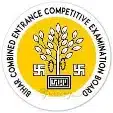Latest Applications Open 2024:
The examining authority provides the comprehensive syllabus for JEXPO 2024, encompassing all courses covered by the Joint Entrance Examination for Polytechnic courses. This syllabus is meticulously designed and offered by the examining authority to aid candidates in their exam preparation. The State Council of Technical Education of West Bengal administers JEXPO. It is an entrance exam at the state level, also known as the WB Polytechnic exam.
JEXPO, also known as the WB Polytechnic exam, is conducted by the State Council of Technical Education in West Bengal. It serves as a state-level entrance examination specifically intended for candidates aspiring to pursue the first year of a degree in Engineering and Technology within the state. Successful performance in the JEXPO exam opens doors for candidates to secure admission into government and private colleges offering Polytechnic courses in West Bengal.
The JEXPO 2024 Syllabus is pivotal in guiding candidates through the topics and subjects assessed in the examination, thereby assisting them in their preparation journey. This comprehensive syllabus information equips candidates with a detailed understanding of the topics and subjects covered in the JEXPO exam, enabling them to strategize and prepare effectively for this crucial entrance examination.
JEXPO 2024 Syllabus
In the JEXPO Exam, the candidate will ask the questions of the last qualifying examination. The JEXPO 2024 program will include topics studied by candidates for the tenth or equivalent exam.
Mathematics, English, Physical Sciences and Science are the subjects needed to study for the exam. Candidates can follow the full program to get a good score on the exam.
Latest Applications For Various UG & PG Courses Open 2024
-
- Parul University | Admissions Open for All Courses 2024. Apply Now
- Chandigarh University | Admissions Open for All Courses 2024. Apply Now
- NIIT | Admissions Open for All Courses 2024. Apply Now
- KL University | Admissions Open for All Courses 2024. Apply Now
- Alliance UG | Admissions Open for All Courses 2024. Apply Now
- GD Goenka | Admissions Open for All Courses 2024. Apply Now
Diploma in Engineering & Technology courses
Agricultural Engineering, Architecture, Automobile Engineering, Chemical Engineering, Civil Engineering, Computer Science and Technology, Computer Software Technology, Electrical Engineering, Electronics & Instrumentation Engineering, Electronics & Telecommunication Engineering, Electrical and Electronics Engineering, Electrical Engineering Industrial Control, Electrical Power System, Food Processing Technology, Footwear Technology, Geographic Information System (GIS) & Global Positioning System (GPS), Instrumentation and Control Engineering, Information Technology, Interior-Decoration, Leather Goods Technology, Mechanical Engineering, Mechanical Engineering (Production), Metallurgical Engineering, Mining Engineering, Mine Surveying, Medical Laboratory Technology, Multi-Media Technology, Packaging Technology, Photography, Printing Technology, Renewable Energy, and Survey Engineering.
JEXPO 2024 Section-wise Syllabus
Here, candidates can check the Complete Syllabus for all subjects included topic-wise.
Physical Science Syllabus
Unit – 1 Units, Dimensions & Measurements
System of units – Need for measurement in engineering and science. CGS, MKS, and SI. Fundamental and derived units (SI).
Dimensions: Dimensions of a physical quantity. Principle of dimensional homogeneity (explanation with examples). Applications of dimensional analysis. Limitations of dimensional analysis.
Estimation of errors: Concept of a significant figure. Absolute error, Relative or Proportional error, and percentage error (concept only). Accuracy & precision of instruments (concept only, examples only with slide calipers and screw gauge).
Unit – 2 General Properties Of Matter
Elasticity: Deforming force and restoring force. Elastic and plastic body. Stress and strain. Hooke’s law.
Stress-strain diagram. Young’s modulus, Bulk modulus, Rigidity modulus, and Poisson’s ratio (definition and formula) and the relation between them (no derivation). (Simple numerical problems).
Surface Tension: Cohesive and adhesive forces. Definition, dimension, and SI unit of surface tension. Surface energy (concept only). The angle of contact (definition only). Capillarity, the shape of a liquid meniscus in a capillary tube, the rise of liquid in a capillary tube (no derivation, simple numerical problems). Effect of impurity and temperature on surface tension. Some natural examples of surface tension.
Fluid Mechanics: Pascal’s law. Multiplication of force. Buoyancy. Conditions of equilibrium of the floating body. Archimedes’ principle. [Simple numerical problems]. Streamline flow and turbulent flow of a fluid (concept), critical velocity (definition only). Equation of continuity and Bernoulli’s theorem (statement and equation only, simple problems). Viscosity, Newton’s formula for viscous force, coefficient of viscosity (definition, dimension, and SI unit). Stokes law (dimensional derivation) and terminal velocity (concept and formula only).Effect of temperature on viscosity.
Unit – 3 Heat And Thermodynamics
Thermal expansion of solid: Linear, areal and cubical expansion and their coefficients (definition and formula)
and their relation (no derivation). Change of density with temperature (formula only). (Simple numerical problems).
Transmission of heat: Conduction, convection, and radiation (differences). Thermal conductivity (formula,
definition, dimensions, and SI unit). (Simple formula based numerical problems including composite slab). Examples & use of good and bad conductor of heat.
Thermodynamics: Zeroth law of thermodynamics. Temperature and internal energy (concept only). The first law of thermodynamics (statement and equation only). Specific heats of gas, their relation (no derivation), and their ratio. Isothermal, isobaric, isochoric, and adiabatic process (definition only).
Unit- 4 Light:
Photometry: Luminous flux, luminous intensity, illumination, and S.I. units — Principle of Photometry (statement only).
Refraction of Light: Refraction of light through-plane surface. Laws of refraction. Refractive index — Relative & Absolute, its relation with the velocity of light in different media. Total internal reflection and critical angle. An optical fiber (Principle & applications – mention only).
Optical lens: Lens and definition of related terms (Recapitulation). Cartesian sign convention. Lens maker’s formula (no derivation). The relation between u, v, f (usual symbols) (no derivation). Principle of a magnifying glass. Power of a lens and its unit. Equivalent focal length & power of two thin lenses in contact (formula only). (Simple numerical problems).
Wave Theory Of Light & Interference: Huygen’s wave theory, wavefront – spherical, cylindrical and plane wavefront (Idea only). Huygen’s principle of propagation of wavefront. An analytical expression for 1D plane light wave. Principle of superposition of waves. Coherent sources (Idea only). Interference of light waves, constructive and destructive interference. Young’s double-slit experiment – analytical treatment.
Unit – 5 Modern Physics:
Photoelectric Effect: Photoemission, Work function. Photoelectric current, its variation with intensity and
frequency of incident radiation. Stopping potential, Threshold frequency. Concept of the photon. Einstein’s photoelectric equation. Principle of solar photo-voltaic cell and its uses.
Syllabus for Basic Chemistry
Unit: 1 Name of the Topics: Atomic Structure and Chemical Bonding
Atomic Structure: Bohr model of the atom [ Radius and Energy of H – atom is excluded], De Broglie modification, Quantum numbers, Orbits and Orbitals, Aufbau principle, Pauli’s Exclusion principle, Hund’s rule of maximum multiplicity, Electronic configuration of elements up to atomic number 36. Definition of Atomic number, Mass number, Isotopes, Isotones, and Isobars with suitable examples. Concept of hybridization sp3, sp2, sp, and shape of molecules (simple example H2O, NH3, BCl3, BeCl2).
Chemical Bonding: Electrovalent, Covalent and coordinate bonds, H-bond in HF, water, and ice. Classification of solids – crystalline and amorphous. Relationship between structure and properties of the following crystalline solids- (i) Ionic solidi,e. Sodium chloride (ii) Covalent solidi,e. diamond and graphite (iii) Molecular solids I,e. metallic bonds and related properties. Properties and uses of Carbon, Silicon, and Germanium.
Unit: 2 Name of the Topics: Avogadro Concept, Acids, Bases & Salts
Avogadro number, Mole concept, Simple numerical problems involving Weight and volume. Acids, Bases and Salts (Arrhenius and Lewis concept) Basicity of acids and Acidity of bases, Neutralization reaction, Hydrolysis of Salts, Equivalent Weight of acids, bases, & salts of Strength of Solution —- normality, molarity, molality, formality and percentage strength, standard solution primary and secondary standards, the concept of pH, and pH scale, Indicators, and choice of indicator, principles of acidimetry and alkalimetry (simple numerical problems) Buffer solution (excluding numerical problems) Solubility product principle (excluding numerical problems), common ion effect with relation to group analysis.
Unit 3: Oxidation, Reduction, Electrochemistry
Oxidation and Reduction by electronic concept, balancing chemical equations by Ion-electron method, Redox Titration, Electrolysis, Arrhenius theory, Faraday’s Laws, Electrolysis of CuSO4 solution using Pt-electrode and Cu-electrode, simple numerical problems on electrolysis, Application of electrolysis such as Electroplating, Electrorefinings, and Electrotyping, Electrochemical Cells, Primary Cell- Dry Cell, Secondary Cell — Lead storage cell, Electrochemical series.
Chemical Equilibrium
Reversible and irreversible reactions, Exothermic and Endothermic reactions, the concept of chemical equilibrium, Lechatelier’s principle, Industrial preparation of Ammonia by Haber’s Process, Nitric acid by Ostwald’s process and Sulphuric acid by Contact Process (Physicochemical principles only), catalyst and catalysis.
Unit: 4 Name of the Topics:
Minerals, Ores, Gangue, Flux, Slag, General method of extraction of metals with reference to Iron,
Metallurgy
copper and Aluminium (detailed method of extraction is excluded) Definition of Alloy, purposes of making Alloy, Composition and uses of alloys (Brass, Bronze German Silver, Deuralumin, Nichrome, Bell metal, Gunmetal, Monel metal, Alnico, Dutch metal, Babbit metal, stainless steel), Amalgams, properties, and uses of cast iron, wrought iron, steel and sponge iron, Manufacture of steel by L-D process, composition and uses of different alloy steels.
Unit: 5 Name of the Topics: Water
Soft and Hard water, Action of soap on water, Types of Hardness, causes of hardness, Units of hardness, Disadvantages of using hard water, Estimation of total hardness by EDTA method, Removal of hardness — Permit process, Ion-exchange process, phosphate conditioning, and Calgon treatment. Distilled water and Deionised water.
Unit: 6 Name of the Topics: Organic Chemistry
Organic compounds, their differences from inorganic compounds, Classification, Homologous series, Functional groups, Isomerism, Nomenclature up to C5, properties and preparation of Methane, Ethylene and Acetylene, Methylated spirit, Rectified spirit, Power alcohol, Proof spirit, uses of Benzene, Naphthalene, and phenol, Chromatographic techniques of separation of organic compounds (Thin-Layer Chromatography).
Syllabus for Mathematics
Unit 1 Algebra
Logarithm
- Definition of natural and common Logarithm
- Laws of Logarithm. Simple Problems.
Complex Numbers
- Definition of Complex numbers, Cartesian, and polar Exponential forms of complex numbers.
- Modulus, amplitude & conjugate of a complex number
- Algebra of Complex numbers (Equality, Addition, Subtraction, Multiplication).
- Cube roots of unity & its properties.
- De Moivre’s theorem (statement only) and simple problems.
Quadratic Equations
- Definition of Quadratic Equations.
- Analyzing the nature of roots using the discriminant.
- The relation between roots & coefficients.
- Conjugate roots.
Binomial Theorem
Latest Applications For Various UG & PG Courses Open 2024
-
- Parul University | Admissions Open for All Courses 2024. Apply Now
- Chandigarh University | Admissions Open for All Courses 2024. Apply Now
- NIIT | Admissions Open for All Courses 2024. Apply Now
- KL University | Admissions Open for All Courses 2024. Apply Now
- Alliance UG | Admissions Open for All Courses 2024. Apply Now
- GD Goenka | Admissions Open for All Courses 2024. Apply Now
- Definition of factorial notation, the definition of permutation and combination with formula.
- Binomial theorem for positive index (statement only).
- General term and middle term.
- Binomial theorem for negative index (statement only).
Partial Fraction
- Definition of polynomial fraction, proper & improper fractions, and definition of partial fractions
- Resolving proper fractions into partial fractions with denominator containing non repeated linear factors, repeated
linear factors and irreducible non repeated quadratic factors.
Unit 2 Vector Algebra
- Definition of a vector quantity.
- Concept of the Position vector and Ratio formula.
- Rectangular resolution of a vector.
- Algebra of vectors – equality, addition, subtraction & scalar multiplication.
- Scalar (Dot) product of two vectors with properties.
- Vector (cross) product of two vectors with properties.
- Applications
- Application of dot product in work done by a force and projection of one vector upon another.
- Application of cross-product in finding vector area and moment of a force
Unit 3 Trigonometry
- Trigonometric Ratios of associated, compound, multiple, and sub-multiple angles.
- Inverse trigonometric functions – Definition, formulae, and simple problems.
- Properties of Triangle – sine, cosine, and tangent formulae – Simple Problems.
Unit 4 Coordinate Geometry & Mensuration
Co-ordinate System
- Cartesian & Polar coordinate system
- Distance formula and section formula
- Area of a triangle and condition for collinearity.
Straight Line
- Equation of a straight line in slope point form, intercept form, two-point form, two-intercept form, normal form.
- General equation of a straight line.
- The angle between two straight lines – Condition for parallelism and perpendicularity.
- Length of the perpendicular from a point on a line. The perpendicular distance between two parallel lines.
Circle
- Equation of a circle in standard form, center-radius form, diameter form, two-intercept form.
- General equation of the circle with a given center and radius. Simple Problems.
Conic Section
- Standard equations of parabola, ellipse & hyperbola.
- Definition of focus, vertex, directrix, axes, eccentricity. Simple problems.
Mensuration
- Regular Polygon of n sides – Formula for area and perimeter.
- Prism and Pyramid – Formula for volume & Surface area. Simple Problems.
Unit 5 Function, Limit & Continuity
Function
- Definitions of variables, constants, open & closed intervals.
- Definition & types of functions – Simple Examples
Limits
- Concept & Definition of Limit.
- Standard limits of algebraic, trigonometric, exponential, and logarithmic functions.
- Evaluation of limits.
Continuity
Definition and simple problems of continuity.
Unit-6 Derivative
- Definition of Derivatives, notations.
- A derivative of standard functions.
- Rules for differentiation in case of sum, difference, product, and quotient of functions.
- The derivative of composite functions (Chain rule).
- Derivatives of inverse trigonometric functions.
- Derivatives of implicit functions.
- Logarithmic derivatives.
- Derivatives of parametric functions.
- A derivative of one function concerning another function
- Second-order derivatives.
Applications of Derivatives
- The geometric meaning of the derivative.
- Rate measurement.
- Maxima & Minima (one variable).
If you have any queries regarding the JEXPO 2024 Syllabus, you can ask your query and leave comments below.:

As a dedicated Biology Science graduate, I’m passionate about sharing the latest updates in national and state entrance exams through my blog. I aim to keep aspiring students informed about exam trends, important dates, and changes in syllabi. With a keen interest in education, I strive to offer valuable insights for students navigating the competitive landscape of entrance examinations and admission tests. Stay updated with me.


